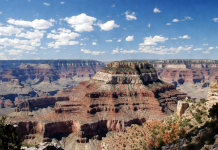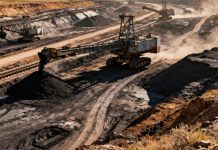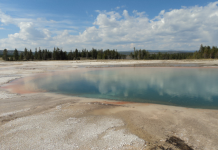The Guadalupe River in Texas has a long history of significant flooding, with major floods recorded as far back as the 19th century.
Climate alarmists were quick to blame climate change after this most recent 2025 event, failing to look back at the history of the region before making their assumptions.
They say that the Guadalupe River, flowing through the Texas Hill Country, is increasingly impacted by climate change, which is altering rainfall patterns, stream-flow, and flood risks. The region is known as “Flash Flood Alley” due to its susceptibility to rapid and severe flooding, a risk now heightened by climate-driven changes.
Actually when you study the history, you might discover that it’s most likely more having to do with humans constantly putting themselves into harms way. If humans weren’t being injured or killed during these flood events then the so-called climate change argument wouldn’t even exist. Climate change doesn’t ever really happen unless there are humans involved at some point.
While it is difficult to provide an exact count of every flood event due to the river’s propensity for frequent flash floods and the limitations of historical record-keeping, several notable major floods have been well documented:
Historically significant floods on the Guadalupe River occurred in the following years:
-
- 1838
- 1848
- 1868
- 1872
- 1906
- 1913
- 1921
- 1936
- 1952
- 1972
- 1973
- 1978
- 1987
- 1989
- 1991
- 1997
- 1998
- 2015
- 2018
- 2020
- 2021
- 2025
These years reflect at least 22 major flood events that have been chronicled in local histories and official reports. Notably, the river is located in what is known as “Flash Flood Alley,” making it particularly susceptible to rapid, destructive flooding due to the area’s rocky terrain and tendency for intense rainfall.
More notable flooding
-
- 1913: Part of the Texas Flood of 1913, causing widespread devastation and loss of life.
- 1972: Exceptionally heavy rain led to major flooding in New Braunfels and Seguin.
- 1987: The deadliest event until 2025, with a tragic loss of life at a church camp near Comfort, Texas.
- 1998: Broke most existing records, exceeding the 100-year flood plain and causing unprecedented damage.
- 2020: Caused more than $1 billion in damage along the river.
- 2025: The river rose 26 feet within 45 minutes, resulting in at least 67 deaths.
In summary
The Guadalupe River has experienced dozens of floods (that we actually know of) over its *known history, with at least 22 major events documented since the 1800s. The river’s location in Flash Flood Alley means that flooding is a persistent and sometimes deadly threat.
We’re pretty confident that these flash floods have been going on for centuries (with even Native American tribes hanging around ’till the flood waters receded in order to collect the fish left behind in the large pools of water) — long before someone came along to document them.
The flooding along the Guadalupe River is a recurring natural event and is not unprecedented — the flooding has been happening long before people came along to make excuses for it. Some things in nature just cannot be explained away by the simple Pseudo Science of climate change.






